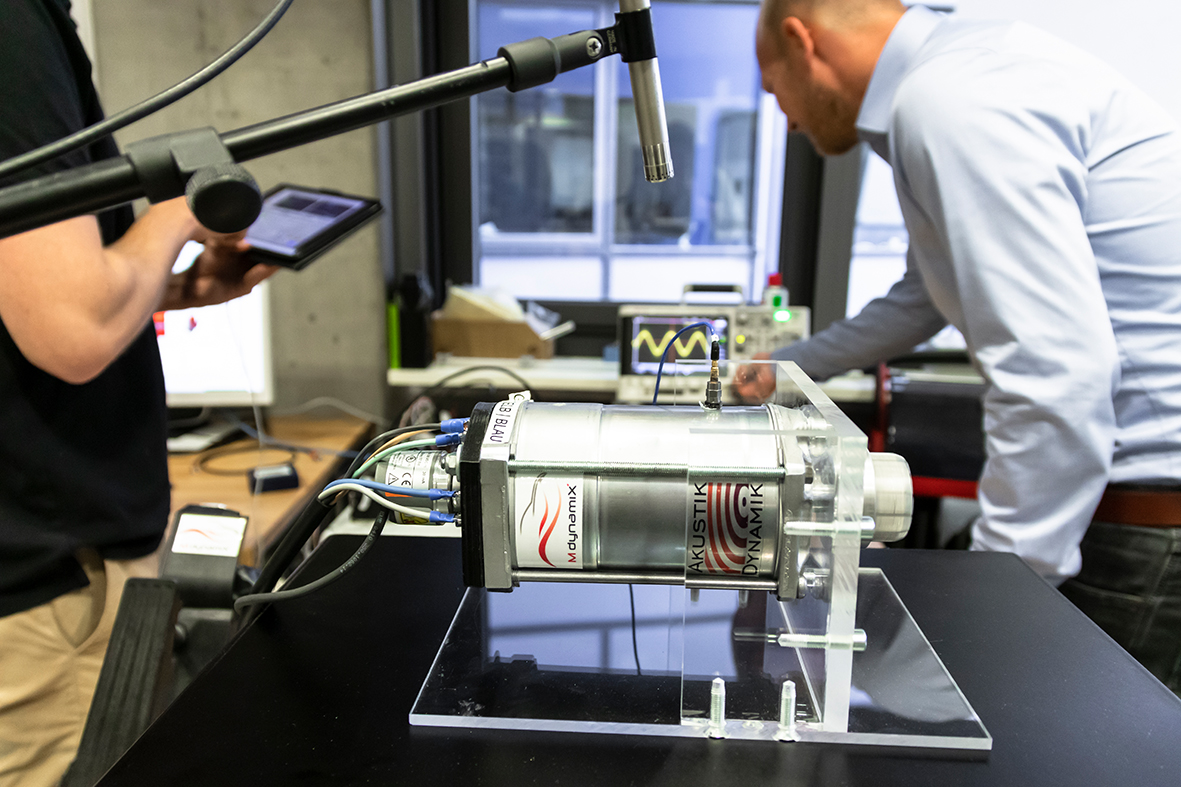RESEARCH WITH THE SPECIFIC GOAL OF INDUSTRIAL APPLICATION
Active Noise Cancellation with electric drives
With the aid of an intelligent system consisting of sensors, algorithms implemented in a control unit and electric motors, noise in the vehicle is cancelled out by sound waves that are specifically generated by existing electric motors (e.g. sunroof motor, steering support motor). To do this, it is first necessary to upgrade the strongly nonlinear electric motors to the sound source using a model-predictive control approach so that pure, sinusoidal oscillations are generated by the electric motor. The noise should be detected using inexpensive accelerometers on the vehicle structure – instead of expensive microphones as in conventional systems. A suitable location for the placement of the sensors must be determined in order to simultaneously suppress the noise in the entire vehicle in the best case. For an accurate function of the algorithms, low latency times of the bus signals (e.g. CAN bus) are necessary, which are to be achieved with predictive measures.
The project can be summarized with the following work steps.
- Development of a generic, parametric motor model to describe the nonlinear phenomena leading to harmonics. Use of this model in a generic, model-predictive control algorithm to generate pure, tonal oscillations.
The causes for the generation of harmonics are determined by a detailed analysis of the motor and its nonlinear characteristics. A model-based predictive control is then used to suppress the harmonics so that only the desired fundamental frequency is reproduced by the motor. With the help of FEM simulation models, the influence of the motor parameters (e.g. pole coverage factor, stator material, etc.) for different motor topologies is to be analyzed and described analytically.
- Development of algorithms that use vibration analysis to identify structure-borne sound measurement points on the vehicle structure that correlate optimally with the corresponding airborne sound level in the passenger compartment.
Instead of expensive microphones, low-cost accelerometers will be used to determine and reduce the noise. The idea is to find a suitable location on the vehicle structure for placing an accelerometer, with the property that a reduction of vibrations at this location will lead to a simultaneous reduction of interior noise.
- Development of model-based prediction algorithms to reduce latency in vehicle bus signals.
Adaptive maps are to be used in which the converged parameters of the FxLMS algorithm are stored for all occurring operating states (engine speed, load) of corresponding noise, whereby ideally the convergence time can be reduced to zero. Only slowly time-varying influences such as aging or temperature change must then be adapted by the FxLMS algorithm and again stored in the maps. The adaptation of the maps takes place within the scope of an end-of-line test and/or during operation, i.e. the maps constantly adapt to the changing environmental conditions.
- Development of adaptive algorithms and tools for continuous identification and tracking of the secondary link transfer functions, possibly by using already existing sensor technology (e.g. hands-free system, vehicle dynamics or ABS sensors).
Algorithms are to be developed and implemented that perform online identification of the secondary link at intervals yet to be determined using small signals that are imperceptible to the vehicle’s occupants. Furthermore, alternative algorithms that do not require a secondary path transmission function are to be investigated for their suitability for active noise suppression.

